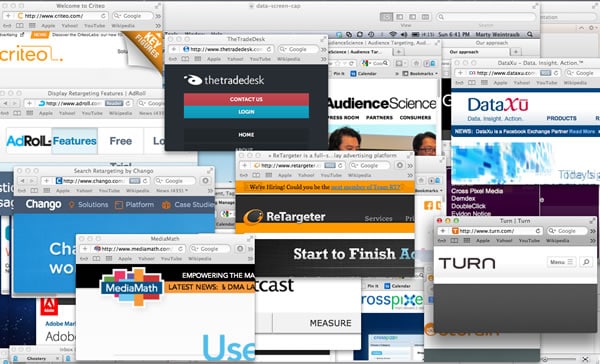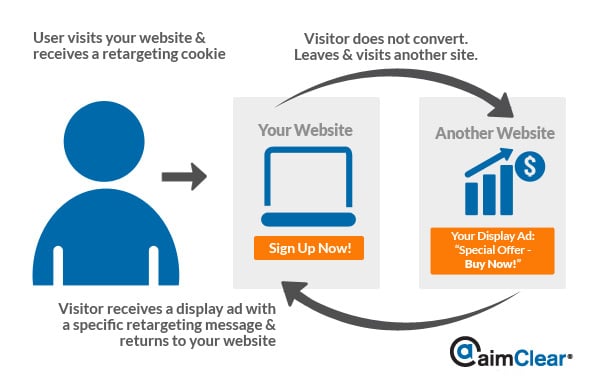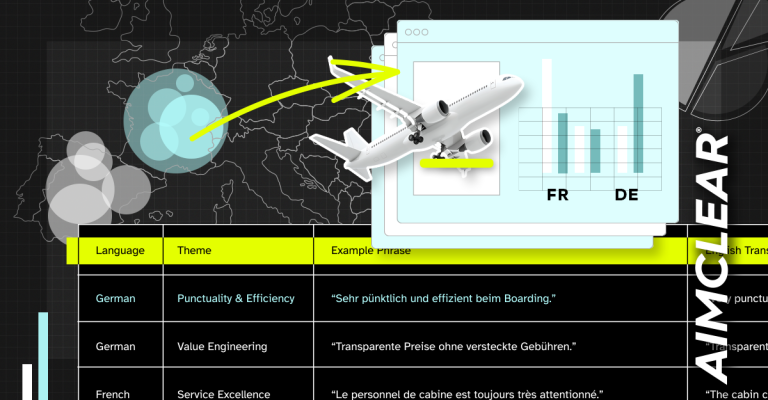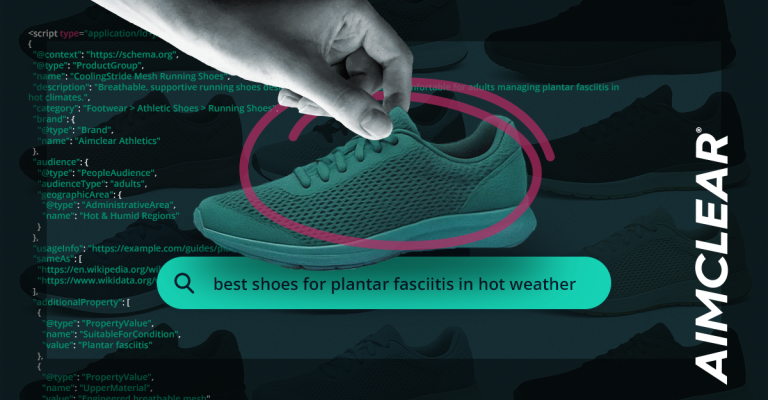Ask any marketing director or CMO what’s on their minds and you’re likely to hear that they’ve been studying emergent media-buy models, wondering (or more likely, already testing) retargeting. Retargeting is amazingly deep, especially given that big data partnerships make retargeting ads to high intent users on OTHER people’s websites possible.
This post offers a practical tour of classic site retargeting techniques and introduces insiders’ alternative uses for advertising and PR pros. From eCommerce and lead gen’ to PR content amplification, we’ll explain how to think about site retargeting and what to do first for short term success.
If you’re confused about the overload of retargeting company sales pitches you may be entertaining, this post will demystify (your) site retargeting product types and give you the ammunition needed to deconstruct service providers to a good level of understanding.
We’ll also introduce you to third party data targeting and filters. It’s important to understand the difference between site retargeting (your site, first party data) and third party targets.
Let’s do it!
2013: Year of 1,000 DSPs
Two thousand twelve has been all about major marketing industry shifts. Cheese moves so fast in this digital wine bar that agency and in-house marketers must continually refresh tactics to stay relevant. DSPs, software and services giving marketers access to major ads networks,are not that complicated to build. New services are exploding onto the scene every month. This era’s technical marketing evolution reminds me of when musicians first used Macs to record midi and audio on the same timeline.
In most ways, little about marketing has changed. Retargeting is as easy to fathom as navigating a new set of channel options for distribution. It’s easy to screw up and waste time that should have been spent on more fundamental marketing activities, like creative and landing pages. Retargeting can also turbocharge, or at least scale, conversion. Most marketers should aim to boost conversion that already exists, a reasonable percentage, with well-advised site visit amplification.
It’s interesting to note that when marketers say “retargeting” or “remarketing,” often they are referring to only one or two common types of retargeting. We’ll flag them in this post. In 2013, many alternative and ultra-effective retargeting usages will emerge; hot techniques driven by big data. There will be hundreds of commercial DSPs facilitating a colorful array of boutique targeting and retargeting options. New usages will intrigue. Already, there are dozens of fantastic big data audience sources and tools to deconstruct them. Let’s go on a site retatgeting adventure!
What Is Retargeting, Anyway? The Basics
Retargeting is relatively simple. A user visits your website, does not convert, and leaves. Later, when visiting another website, the visitor is served your banner ad.
Initial visitor quality to your site matters a lot. No matter how BIG big data gets, websites will always need to drive qualified users into the system.
- Say you stand outside the mall and give 10,000 random people $50 to touch your site on mobile.
- For the next two weeks, you retarget those users to sell a highly specific product (say, basket weaving supplies).
- You’re not going to get much traction from this retargeting campaign.
- NOW, retarget them for a cute new mobile greeting card service… or toilet paper. These are broader topics.
- There may be some traction in this retargeting campaign.
The focus of that visitor means everything. Retargeting won’t fix bad marketing. One of the easiest ways to be successful in the short term with retargeting is to take inventory of what already works in your website– classic analytics scenarios that already convert at a good percentage of visitors– and use retargeting to squeeze more out of conversion winners.
Creative is always the issue! For each method of retargeting, subsequent banners need to pump the KPI. Banner creative needs to drive the the visitor’s intent.
- The funnel to generate a snowmobile lead is a landing page.
- Visitors from a search PPC keyword look at at least one other page in the website and the retargeting cookie is set.
- The banner creative while the user is reading CNN says, “Boating Is Great In Minnesota.”
- You’re not going to generate many good snowmobile leads with this search PPC site retargeting campaign.
- Now, consider the banner creative (while that same user is reading CNN) is a zoomed in picture of a snowmobile with huge yellow and black motion blurs. The headline reads “80 miles per hour, warm hands, FIRE in your soul!”
- The users who see it have already clicked on a PPC ad and demonstrated intent. The creative drove the KPI from the retargeted touch.
- Any questions?
Various services mashup visitor behavior (analytics), other criteria, and third party data to further qualify who is retargeted, targeted, and when. Nearly every retargeting sales pitch you come in contact with will be a spin on either first party date (your site), third party date (big data), or mashed up first and third party data.
OK, let’s discuss 10 archetypal retargeting methodologies. We’ll also want to touch upon audiences advised by big data. Of particular interest is how emergent data interrelationships fit and where REtargeting becomes straight up intent TARGETING. By the end of this post, you’ll know more about what retargeting means and ideas about what do first.
Click 2 to continue reading.










